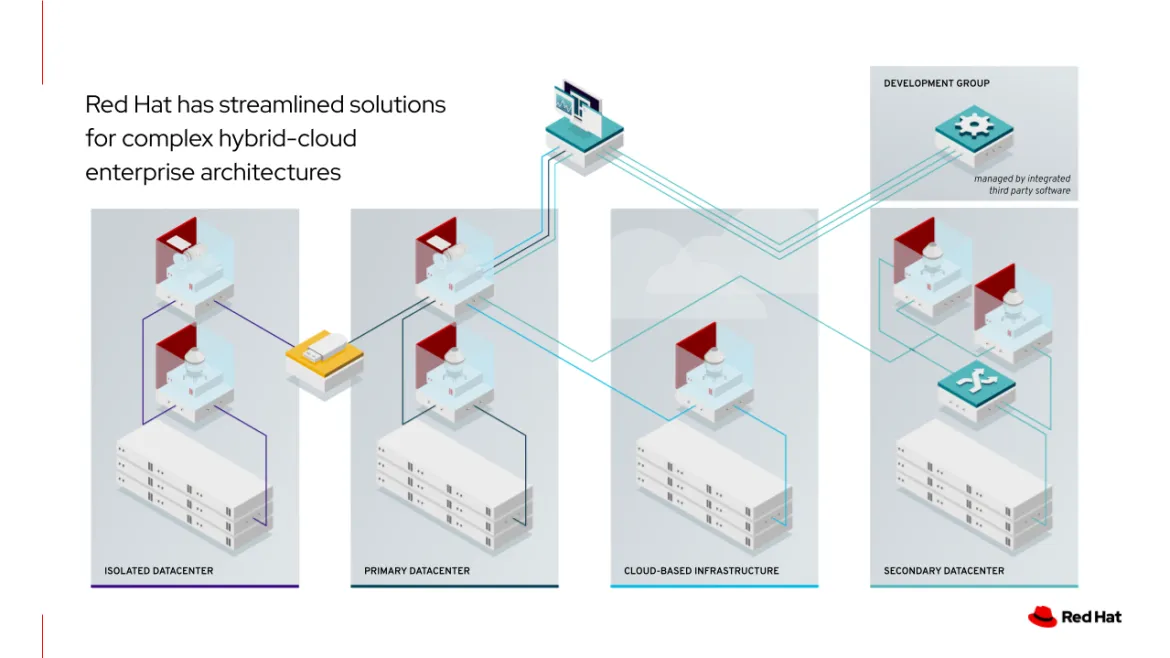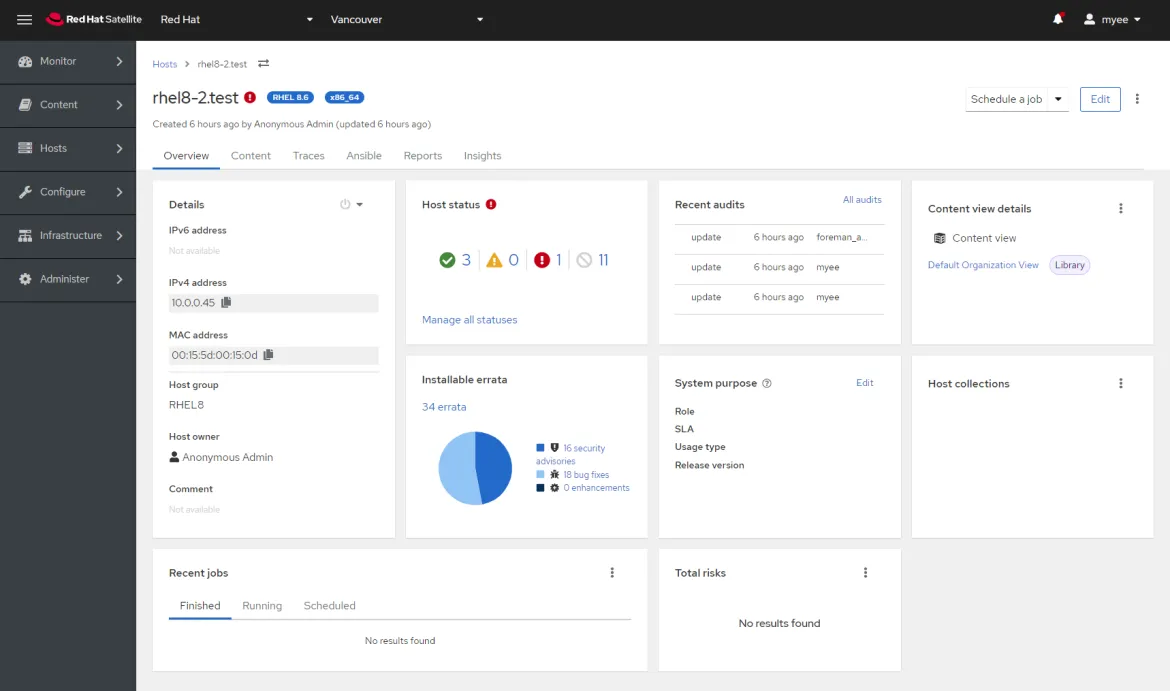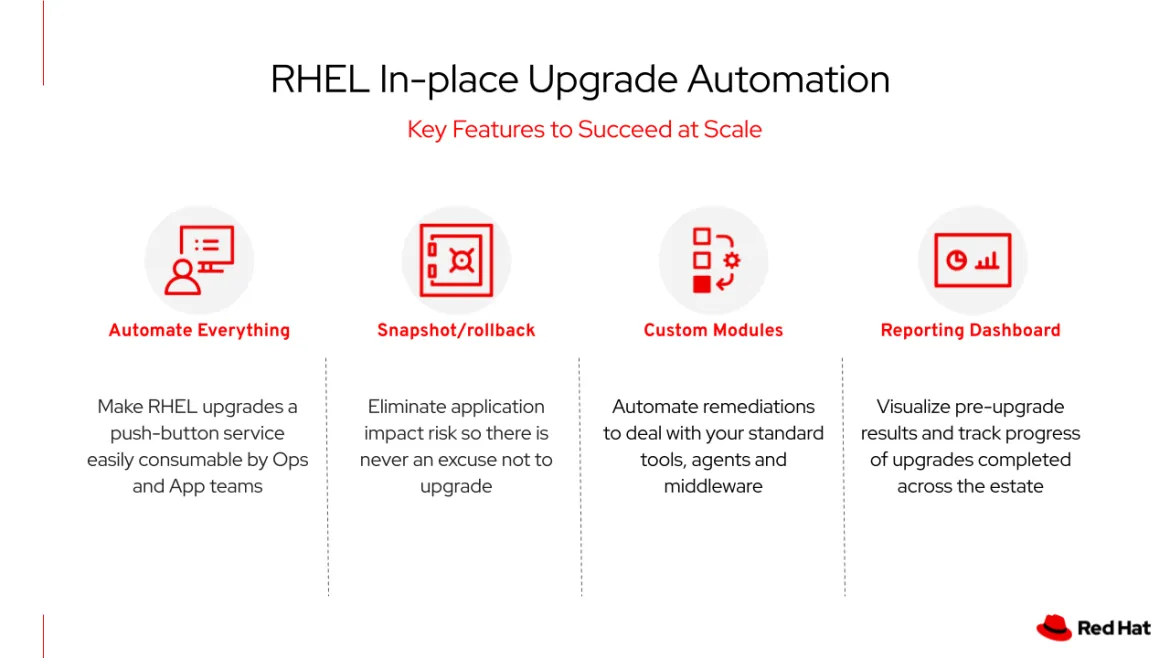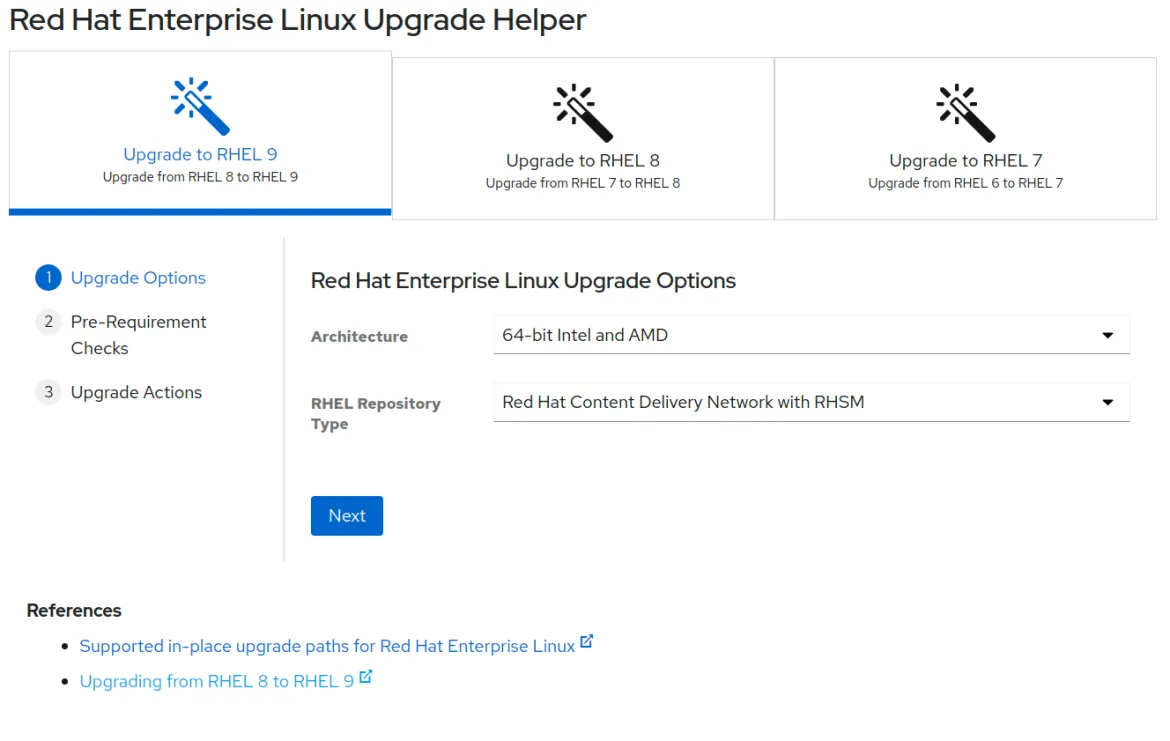Red Hat Enterprise Linux 7 has reached the end of its maintenance support 2 phase. Upgrade to the latest version or take advantage of Extended Lifecycle Support (ELS) for up to 4 additional years of maintenance support for the last minor release (7.9) until June 30, 2028. Act now.
There are many benefits to implementing a Standard Operating Environment (SOE), such as simplified logistics and economies of scale. The task of maintaining that environment, however, can be daunting under the best of circumstances. Often, the needs of the customer base you’re entrusted with supporting can undermine the goals of providing that support. To cite just one example, maybe your development team needs access to an archival build for testing while the information assurance team requires all systems to be at a particular software revision by a specific date. Even if all the stakeholders could agree on a specific iteration, there are issues of personnel, compute resources, maintenance overhead, legacy support costs and more that need to be addressed when increments of that iteration occur.
Red Hat has heard this user story from our customers, and we have listened. As a result, we have created a suite of tools with the goal of enabling our customers to identify, mitigate and remove expensive platform creep, which drains not only budgets but the efficiency and motivation of their experienced workforce.

Red Hat Satellite
Red Hat Satellite is a comprehensive infrastructure management product specifically designed to keep Red Hat Enterprise Linux (RHEL) environments and other Red Hat infrastructure running efficiently, with improved securityy while remaining compliant with various standards. Satellite’s focus on content, patch, provisioning and subscription management allows for robust control of what content is available to your Red Hat infrastructure and when.

Red Hat Ansible Automation Platform
Red Hat Ansible Automation Platform provides an enterprise framework for building and operating IT automation at scale. As an automation framework, Ansible Automation Platform serves as a force multiplier, making it possible to execute repeatable actions more efficiently, while providing an array of auditing and monitoring facilities.

Red Hat Customer Portal
The Red Hat Customer Portal is an easy-to-use, 24-7 online resource for documents, articles, videos, tools and the most up-to-date information regarding Red Hat products and services.
It’s where you can find information on complementary tools such as the Leapp utility for achieving in-place upgrades, the BOOM utility for snapshots and rollbacks and the RHEL Upgrade Helper which helps identify supported workflows for bringing your RHEL architecture up to date.

How would it work?
Tools are great, but they are far from a comprehensive solution. For an enterprise organization to meet operational goals around system management, a solution must possess certain key features:
- End-to-end automation
- Snapshot/rollback Capabilities
- Third-party tool/agents support
- Reporting dashboard
Red Hat’s suite of management capabilities does exactly this. Ansible Automation Platform is the centralized coordination point that is able to both drive an intelligent and dynamic deployment of the upgrade workflow while also reporting on the status of the deployment.
Satellite infrastructure serves as a centralized repository for content necessary to complete the workflow, helping to deliver a standardized, predictable and repeatable process. Once the Leapp/BOOM combination toolchain is installed, customized Ansible Automation Platform workflows can use those utilities to achieve the intended migration with less risk. Best of all, this is done at scale, with minimal downtime, a built-in rollback plan and parallelized workflows.

How Red Hat can help
Red Hat Consulting helps organizations achieve their goals through mentoring and automating their infrastructure, decreasing time to market and reducing errors. Our experts provide customers with comprehensive support and guidance to build and integrate platforms with both open source and proprietary technology.
With hands-on mentoring, our consultants help teams build their skills while streamlining processes, aligning teams and verifying that systems and applications work together uninterrupted. Red Hat consultants communicate directly with Red Hat Support and product development organizations. Many of our consultants are also active contributors to the upstream open source communities behind Red Hat technologies, so they bring unparalleled expertise.
Red Hat Consulting gives you the information and skills you need to move to Red Hat solutions safely and efficiently. Ready to get started? Request a discovery session or contact our team today.
Red Hat Technical Account Managers (TAMs) are technical advisors for customers and partners seeking help with planning and deploying their Red Hat software more successfully and with a focus on security. A TAM is a single point of contact that works with you to resolve potential problems before they occur. A TAM is an engineer and support expert advising on technology strategy and security concerns and is an advocate for you internally at Red Hat.
Red Hat Training fuels your team’s innovation by addressing organizational skills gaps. With a comprehensive platform curriculum, your organization can build the skills for long-term success with your infrastructure investments.
Learn more about Red Hat Services and Red Hat Training and Certification.
About the author
Browse by channel
Automation
The latest on IT automation for tech, teams, and environments
Artificial intelligence
Updates on the platforms that free customers to run AI workloads anywhere
Open hybrid cloud
Explore how we build a more flexible future with hybrid cloud
Security
The latest on how we reduce risks across environments and technologies
Edge computing
Updates on the platforms that simplify operations at the edge
Infrastructure
The latest on the world’s leading enterprise Linux platform
Applications
Inside our solutions to the toughest application challenges
Original shows
Entertaining stories from the makers and leaders in enterprise tech
Products
- Red Hat Enterprise Linux
- Red Hat OpenShift
- Red Hat Ansible Automation Platform
- Cloud services
- See all products
Tools
- Training and certification
- My account
- Customer support
- Developer resources
- Find a partner
- Red Hat Ecosystem Catalog
- Red Hat value calculator
- Documentation
Try, buy, & sell
Communicate
About Red Hat
We’re the world’s leading provider of enterprise open source solutions—including Linux, cloud, container, and Kubernetes. We deliver hardened solutions that make it easier for enterprises to work across platforms and environments, from the core datacenter to the network edge.
Select a language
Red Hat legal and privacy links
- About Red Hat
- Jobs
- Events
- Locations
- Contact Red Hat
- Red Hat Blog
- Diversity, equity, and inclusion
- Cool Stuff Store
- Red Hat Summit

